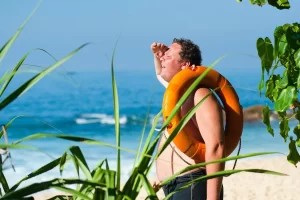Is 72 Degrees Hot?- Just How Hot Is It?
Share
Our bodies react differently to environmental stimuli. The responses are visible whether we are exposed to sudden lighting, sound, and touch changes. Our responses to stimuli are involuntary and natural.
Temperature is one of the most noticeable changes that we can detect. We feel changes in environmental temperature, thanks to the nerves in our bodies. The body can then react accordingly in a process known as thermoregulation.
The brain is responsible for thermoregulation in the body. It either increases the metabolic rate to generate heat or reduces it when exposed to high temperatures. Our sensory structures, mainly the skin, enable us to perceive temperature changes.
So, is 72 degrees hot?
The answer to the question varies depending on thermal exposure. Our bodies tend to experience acclimatization. It is an adaptation that causes the body to adapt to exposure to different temperatures.
A person consistently exposed to temperatures below 72 degrees will find it hot, whereas one exposed to temperatures above will find it cold.
How The Body Regulates Heat
The heat regulation process is complicated, especially in homeothermic species like human beings. Sophisticated systems are working in synch to ensure that we maintain a temperature of 98.6 F.
The process by which the body maintains temperature is known as thermoregulation. Thermoregulation is one of the several homeostatic processes in human beings.
Homeostasis refers to any regulatory adjustments the body makes to achieve equilibrium. There are three main ways in which the body archives thermoregulation. They are:
1. The Central Control
The central control referrers to all functions stimulated by the hypothalamus to regulate body temperature. The hypothalamus is located in the diencephalon region of the brain.
The hypothalamus begins the thermoregulation process after receiving sensory impulses from the skin. Two responses depend on the stimulus interpretation:
Response to heat
The hypothalamus will react by:
- Inducing sweating
Sweating creates a cooling effect on the body by expelling the latent heat of vaporization. It results in a decrease in body temperature.
- Reduced metabolic functions
By reducing the chemical processes in the body, there will be less internal heat generated. It causes a decline in body temperature.
- Inducing vasodilation
Vasodilation is when the veins widen close to the skin’s surface. It causes heat dissipation from the body, effectively lowering the body temperature.
Response to cold
The hypothalamus will react by:
- Inducing shivering
The hypothalamus will induce rapid contraction and relaxation of the muscles in the body in an attempt to generate heat.
- Inducing vasoconstriction
Vasoconstriction is when the blood vessels contract and retreat from the skin’s surface. It results in heat conservation.
- Increasing metabolic processes
By increasing the chemical processes in the body, there will be more heat generated internally. It increases body temperature.
2. Efferent Controls
Efferent controls in the context of thermoregulation referrers to cognitive-behavioral adjustments made to regulate one’s temperature.
These behavioral adjustments occur depending on the stimuli. An example of an efferent reaction would be fanning your face in hot weather or putting on a sweater in cold weather.
Such behavioral impulses are dependent on the ability of the person to recognize the stimuli. It can either be sensory or visual.
3. Afferent Controls
Sensory impulses trigger afferent controls. The skin has nerve endings that form part of the central nervous system. These nerve endings have hot and cold receptors that assist in relaying information from your skin to the hypothalamus.
Any temperature change on the surface of your skin is relayed to your brain, where the homeostatic functions can start.
How To Control Heat Stress
Heat stress is a dangerous phenomenon that occurs due to over-exposure to heat. It can have severe consequences and even lead to death if left unregulated.
So, what is heat stress?
It is a condition that results from extreme dehydration following lengthy exposure to high temperatures. It fails in the body’s homeothermic functions and leads to the victim having dangerously high body temperature.
Detecting Heat Stress
How can heat stress be detected?
There are various symptoms that a person suffering from heat stress can show. Here are the common heat stress characteristics:
- Uncharacteristically high body temperature
A person suffering from heat stress will have a very high body temperature due to thermoregulation failure. No sweat usually accompanies it.
- Headaches
Heat stress usually results in debilitating headaches. They are persistent and seem unrelenting.
- Swollen tongue
A person suffering from heatstroke will have a swollen tongue due to rapid dehydration.
- Dizziness
Suffering from heat stress causes dizziness and disorientation. It is accompanied by incoherent speech, a loss of concentration and awareness.
- Loss of consciousness
It is usually the final stage of extreme heat stress.
How Can Heat Stress Be Prevented?
Now that we understand what heat stress is, let us look at ways we can actively prevent it.
- Hydration
The most effective way to prevent heat stress is always to stay hydrated. Ensure that you have enough water when traveling to hot places.
- Car safety
It would help if you exercised basic safety measures when using your car on hot days. You must never leave children or pets in the car. Always use the air conditioner on hot days, especially during the summer.
You can also drive around with your windows down on hot days.
- Dressing
It always helps to dress right for the weather. Ditch the jackets and scarves on hot days. You can also use umbrellas and fans during the summer to stay cool.
- Air Conditioning
Avoid staying in stuffy and poorly ventilated areas on hot days. Always crack a window open to let in some fresh air.
- Limiting direct exposure to the sun
It would be best always to be careful not to over-expose yourself to direct sunlight, especially during the summer. It helps to use sunscreen and ambarellas. Ensure that there is sufficient shade on all outdoor events.
What To Do To Help Someone Suffering From Heat Stress:
Heat stress is a severe medical emergency. You will need to act quickly to save the victim. Here’s what you need to do:
Step 1: STAY CALM! You cannot offer assistance in an emergency if you do not calm down and act fast.
Step 2: Contact the emergency authorities immediately! Dial 911 and request an ambulance on the emergency hotline.
Step 3: Take the person to a shady area immediately. Remove them from direct sunlight.
Step 4: Lay the person down and take any heavy clothing like jackets. If they are unconscious, clear the airway and lay the person on their side.
Step 5: Fan the person with any object. Improvise with books, paper, etc. You can sprinkle water on the person’s face and chest areas.
Hypothermia
Hypothermia is a condition that occurs as a result of excessive heat loss in the body. It usually occurs when the body’s thermoregulatory functions fail, resulting in rapid heat dissipation.
How Can You Detect Hypothermia?
There are several symptoms that a hypothermic person develops. Some of the most common symptoms are:
- Shivering
It occurs due to the hypothalamus rapidly attempting to generate heat in the muscles. It results in involuntary muscular contraction and relaxation.
- Disorientation
Disorientation is characterized by dizziness, incoherent speech, and a general inability to focus. It occurs in extreme cases of hypothermia.
- Loss of consciousness
Loss of consciousness is the final result of prolonged hypothermia. At this stage, death might be imminent if the condition is not addressed promptly.
- Pale skin
It occurs as a result of exposure to the cold. The skin turns pale as a result of vasoconstriction.
How To Prevent Hypothermia
Here are the steps you can take to prevent hypothermia actively.
- Dressing
If you are going to a cold area or during wintertime, you must dress warmly. Ensure that you are adequately covered from your head to your feet.
- Do not get wet
You must try and avoid getting wet during the winter if you are going to be outdoors.
- Air Conditioning
Invest in a good air conditioning unit. It might be useful during winter.
- Avoid alcohol
There are several risk factors caused by alcohol concerning hypothermia.
Conclusion
The human body is complex and sophisticated. Our homeothermy enables us to regulate our internal temperatures regardless of external changes actively.
The way we perceive temperature varies from one person to the other. A person acclimatized to a higher temperature than 72 degrees will feel cold at 72 degrees. The converse is true for a person who has consistently been exposed to temperatures lower than 72 degrees.
With time, however, the body becomes acclimatized to the prevailing temperature. It occurs as our thermoregulatory functions stabilize and remain constant at a particular range of temperatures.

















